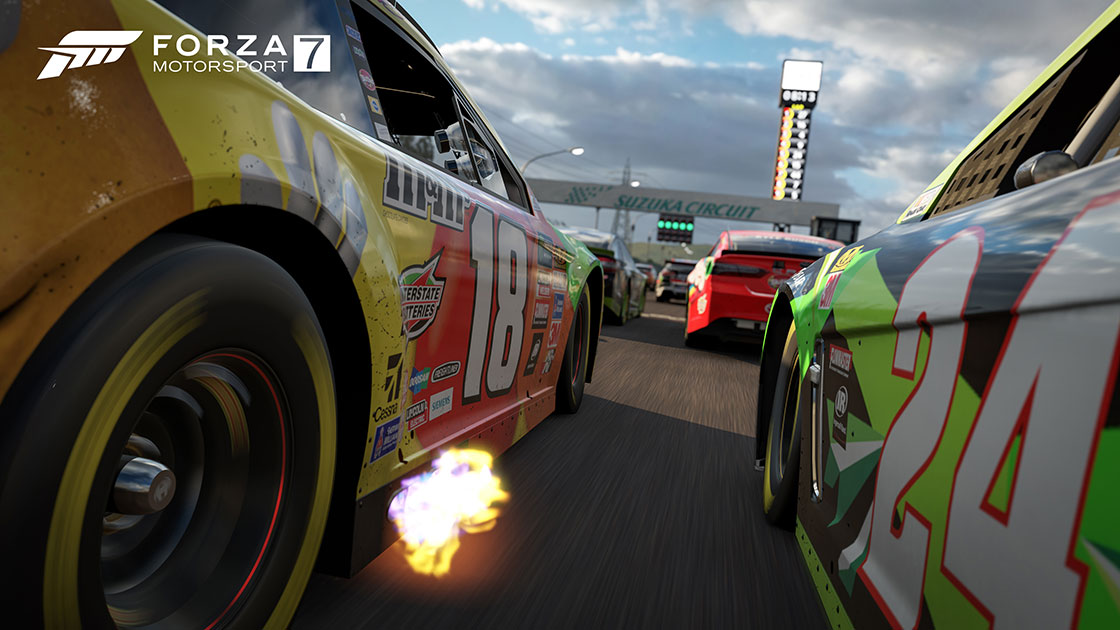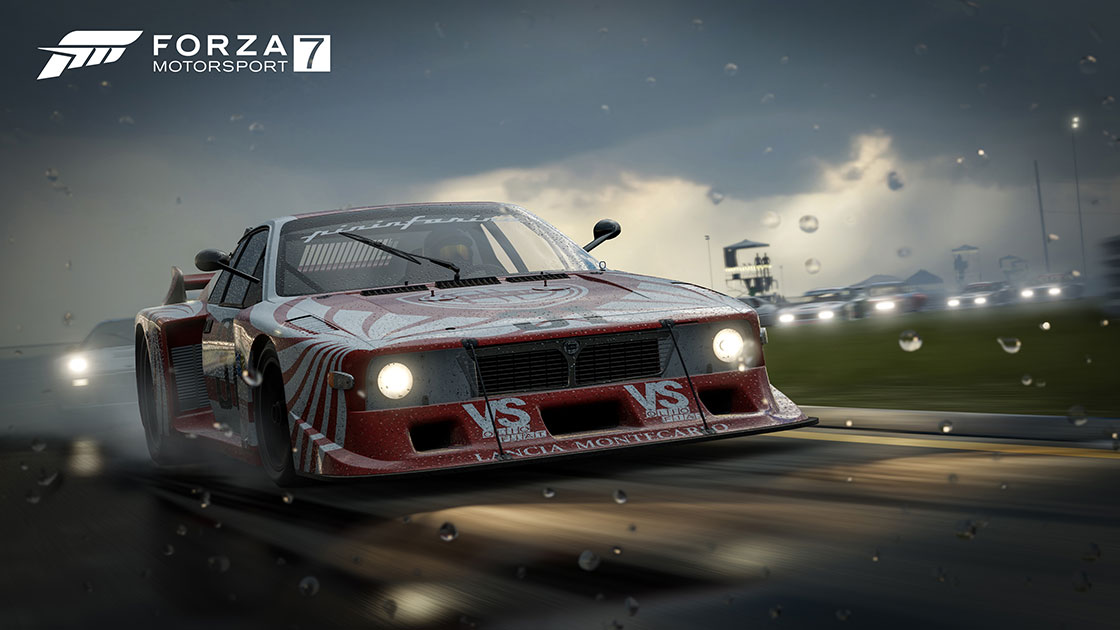Introducing Homologation…
For Forza 7, our goal has been to ensure that any event in the game, be it in single player or online via Xbox Live, features a wide range of cars that are competitive with one another. Homologation is the process of upgrading or downgrading each car in the grid, using strict performance regulations that even the playing field and ensure that cars in the same division are always competitive with one another. This leaves the choice of which car to use not between a mere handful of “leaderboard cars” but rather puts that choice in the hands of the player and their individual preferences.
From the start, homologation is quite different from previous Forza Motorsport games. Like In the past, Car Class (and Performance Index) remains the backbone of the system. However, in previous Forza games, players had numerous ways to reach a class-based ceiling; for example, by boosting horsepower to absurd levels, even if the car was sitting on skinny tires. These became extreme boundary cases which made for extreme peaks and valleys in performance within any given class, and often lead to leaderboard cars. With Forza Motorsport 7 we’re challenging players to tune to homologation standards across multiple performance characteristics beyond Performance Index (PI). This approach naturally limits the most extreme boundary cases and therefore tightens the competitive set of cars.

All of the 700+ cars in the game fall into a specific division – for example, the Porsche 911 GT2 RS is part of the “Exotic GT” division, while the 2017 Ford Focus RS falls into the “Modern Hot Hatch” division. Naturally these two cars represent different levels of performance and, as with all cars in Forza 7, any car can be upgraded and tuned to performance peaks that are far beyond their stock form.
Where homologation comes into play is when it’s time to go racing. In both the Forza Driver’s Cup single player campaign and in multiplayer events created by Turn 10, cars will be homologated to certain performance standards based on their division. These divisions can be applied in Free Play and Private Lobbies as well. These homologation standards will be across several performance characteristics – tire compound, tire width, horsepower, and Performance Index (PI). In order for a particular car to compete in a homologated event, it will need to meet the performance standards inherent to that event. For example an event in the Exotic GT series might allow only “Sport” tire compounds with a maximum tire width of 355, a maximum of 750 horsepower, and a PI ceiling of 800. While cars can and will fall under those performance caps, any build that exceeds those numbers will not be eligible to compete.

As an example illustrated by the screenshot above, I’ve been working on my 2002 Chevrolet Camaro 35th Anniversary Super Sport, a car that is classified in the “Sport Touring Icons” division. The homologation restrictions for racing within that division call for a Street tire compound, with tire width not to exceed 305. In addition, there’s a horsepower cap of 500hp and an overall PI ceiling of 575. As you can see, my current build exceeds these homologation standards in three different areas – tire width, horsepower, and overall PI. While I can continue to build this car as I like, in order to race this Camaro within its homologated division, I’ll need to lower the tire width and remove the Racing Engine Block too.
Now, for those who aren’t expert tuners, we’ve made things easy to make sure that any vehicle you use can be easily brought up to competition standards. The quickest method is our new “auto-homologate” feature. With just a press of a button you can quickly and easily bring a vehicle up to spec and able to compete in a particular event. Even better, all the homologation-necessary parts are automatically included in the price of the car at purchase, meaning you won’t need to spend extra credits to go racing in your new ride.
For players who want some finer control over how they bring their car to homologation standards, you’ll always have a clear understanding of what the homologation restrictions are for an event, thanks to a handy screen that displays the event restrictions and your car’s current settings. You’ll have flexibility to adjust your car upgrades and you’ll get immediate feedback if your performance crosses an event’s threshold.

It’s important to note that homologation does not mean that all homologated cars will behave in precisely the same way. After all, this is Forza, and each car in the game will still feel completely unique in the way our fans expect. This includes highly complex characteristics such as chassis flex, suspension architecture, wheel-base, and moment of inertia. Indeed, certain cars within homologated events will be better for specific tracks (for example, think of speed tracks like Daytona and Indianapolis Motor Speedway, where horsepower will be king). Homologation means that players will be able to have more cars to choose from within each division they play in. Instead of having a handful of “go-to” cars per class, now players are encouraged to build a garage full of event-specific rides just waiting for their turn on the track.
The introduction of homologation in Forza Motorsport 7 is an important evolution to our racing standards in Forza, and a feature that we believe all players will benefit from, regardless of their skill level and experience.